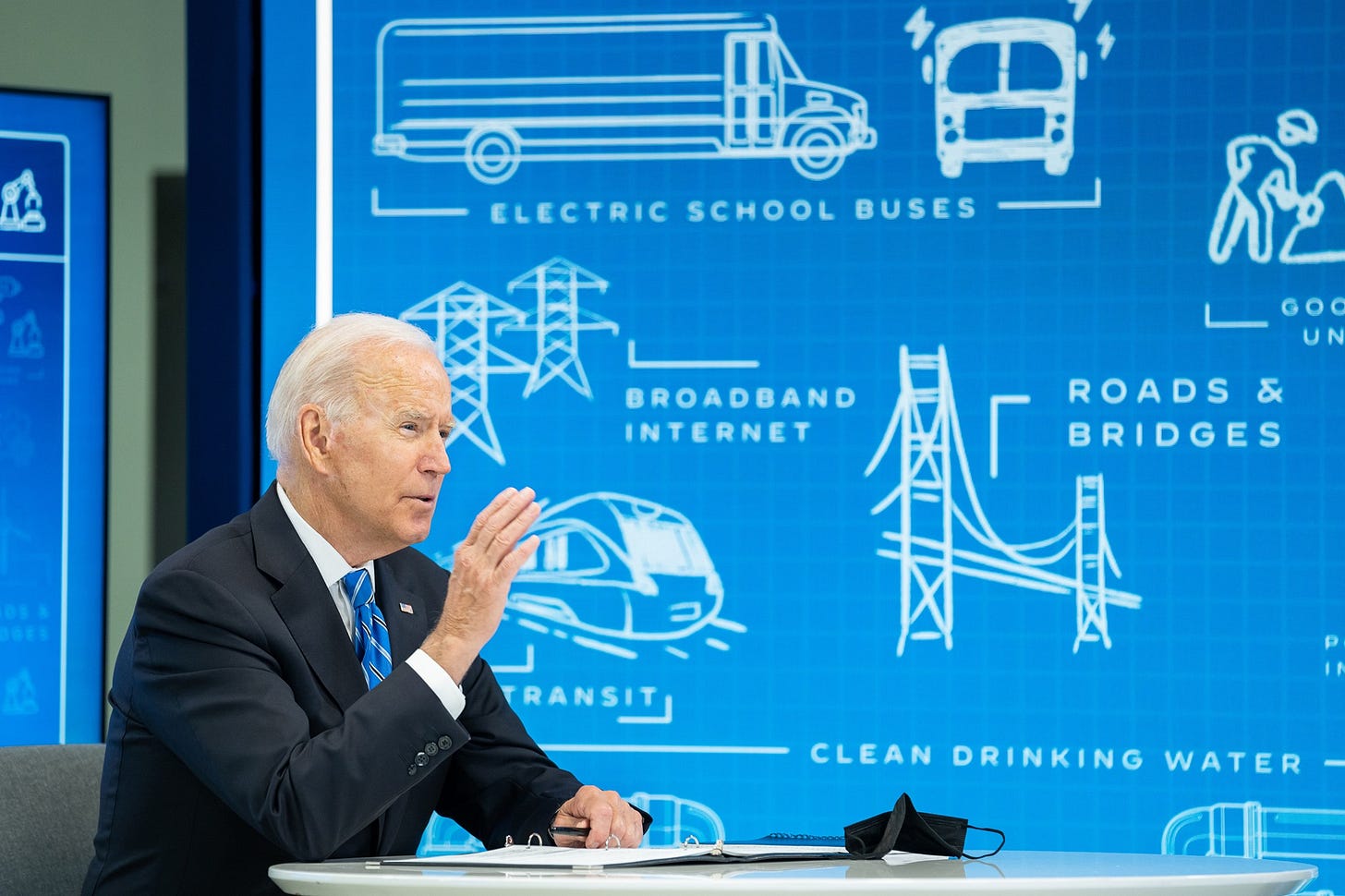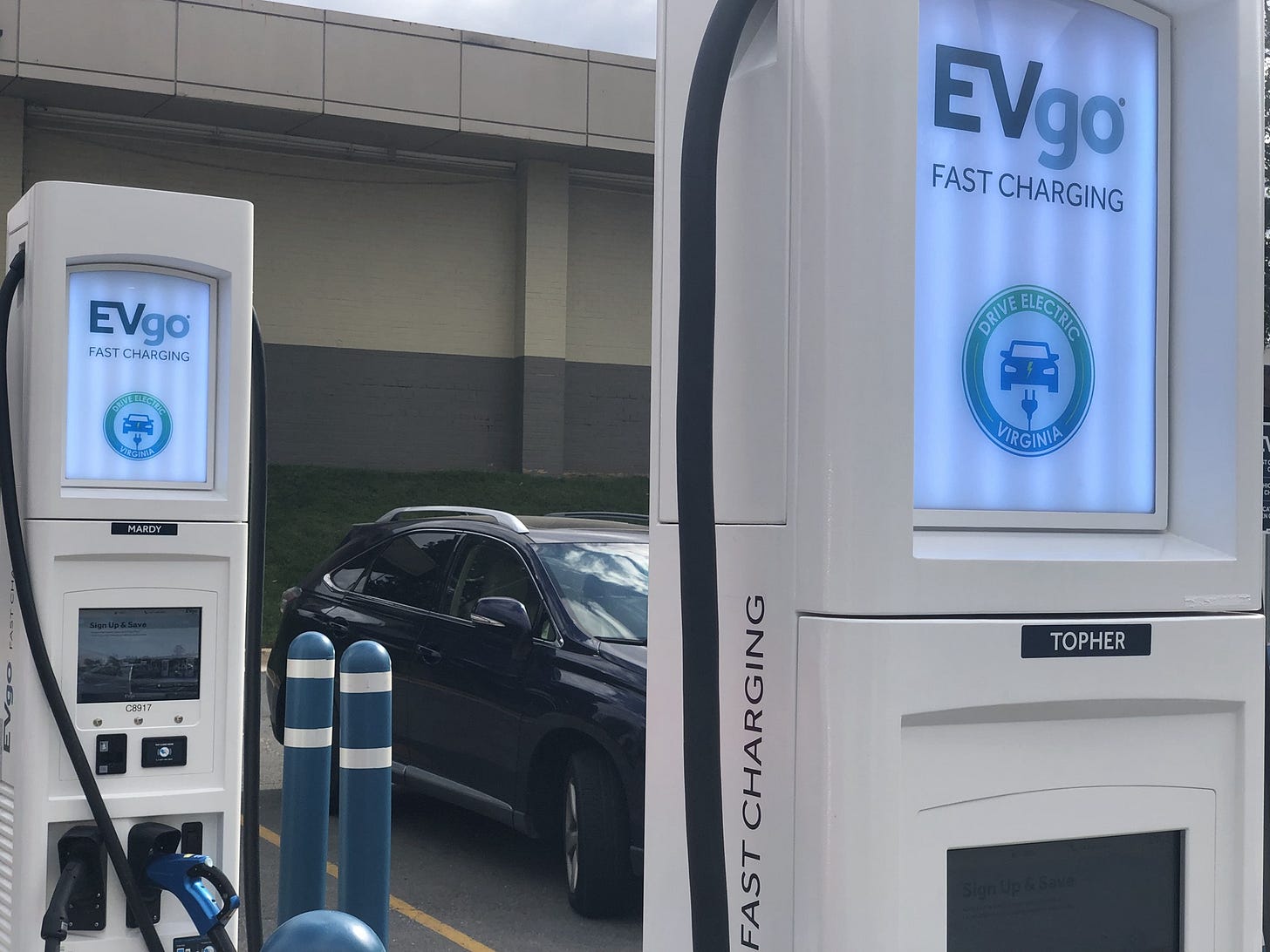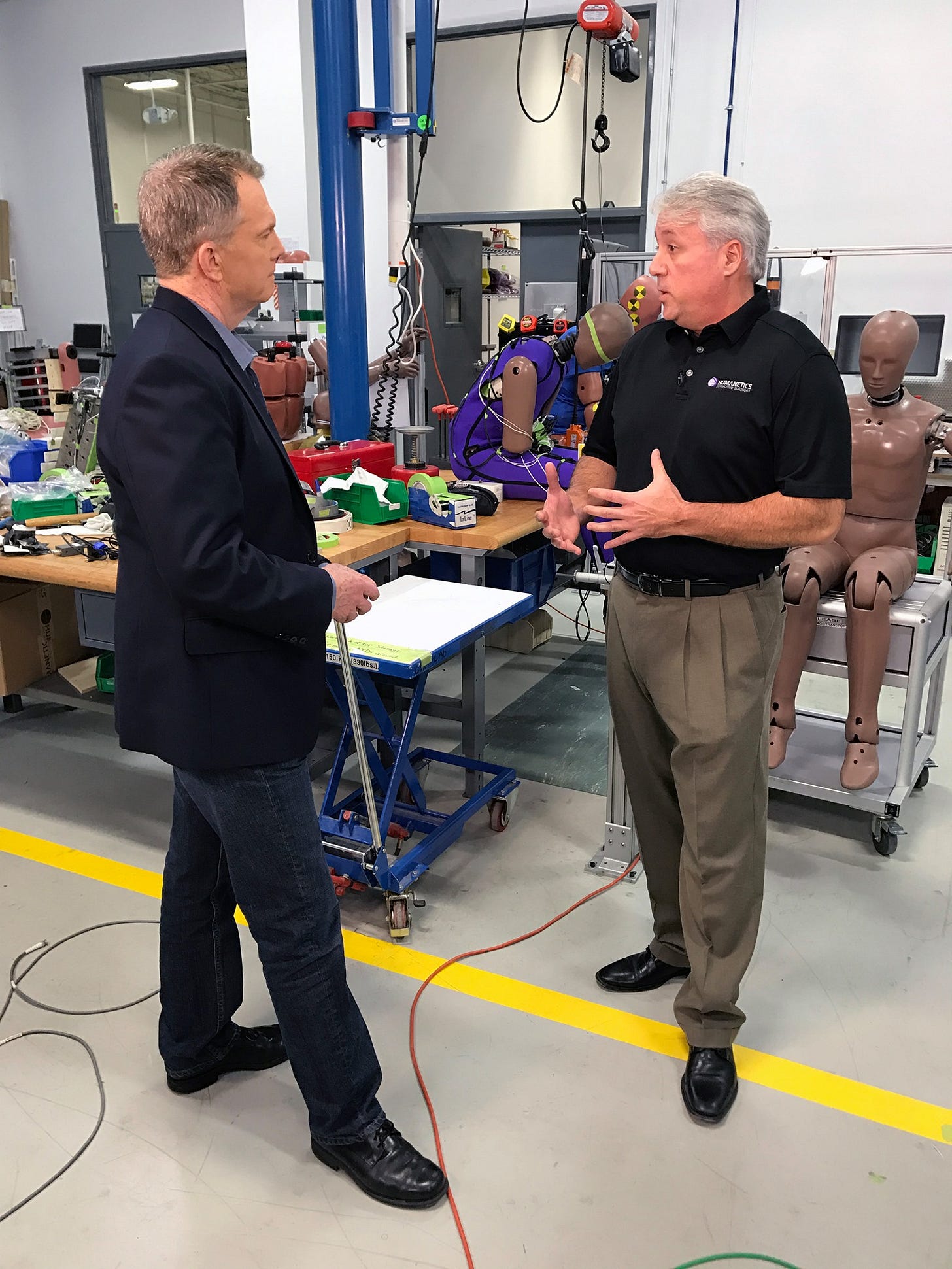You watched the sausage-making- what’s in it?
A Trillion Dollars for Infrastructure to be Doled Out

Please take a moment to subscribe. Full Throttle will be sent to your email inbox twice a week. It's free and you don't need a facebook account. Follow me on your favorite social platform: Twitter, Instagram, or LinkedIn.
November 7, 2021
Pete Buttigeig is about to get very busy. The US Transportation Secretary has to start handing out billions of dollars. As President Biden said, “It is finally infrastructure week.” That, of course, is a dig at his predecessor’s unsuccessful attempts to get an infrastructure bill passed.
The President calls the $1.2 trillion bill a “once in a generation” effort. Billions of dollars will be spent on roads, rails, bridges, broadband, ports, airports, and water resources.
Here’s a look at what the soon-to-be law means for the transportation transformation that I cover in this newsletter.
CHARGING STATIONS
There is a lot about electricity in this bill. In an effort to incentivize the move to electric vehicles (EVs) and reduce the anxiety about charging a vehicle, the bill will provide $7.5 billion dollars to build charging stations. The President says that means 500,000 additional charging stations across the country.
It breaks down like this. The Federal government will give out grants totaling $2.5 billion for “Alternative Fuel Corridors.” The stations don’t have to be electric. They can be natural gas, propane, or hydrogen. The Feds will concentrate on rural and underserved areas. The other $5 billion will be given to the states to build charging stations. The Federal contribution to any project can not be more than 80% of the cost. The bill says “non-proprietary charging connectors” must be used and there has to be “open access to payment methods” for all members of the public.

ELECTRIC SCHOOL BUSES
Clean school buses get a big boost. There is $2.5 billion to help schools buy all-electric buses that are twice as expensive as a gas or diesel bus. Another $2.5 billion can be used to buy electric or alternative fuel school buses.

An all-new EV school bus is parked beside a charging station at South El Monte High School during a ceremony introducing a fleet of 11 all-electric buses on August 18, 2021 in El Monte, California. (Credit: FREDERIC J. BROWN/AFP via Getty Images)
There is $2.5 billion for electric or low carbon ferries to replace some of those fossil fuel-powered ships.
To move all the electricity to charging stations and vehicles, $73 billion will be spent to improve the power grid.
To round out some of the other spending:
-$109 billion roads and bridges (repair and new).
-$39 billion on public transit.
-$66 billion on various rail projects (passenger and freight).
-$25 billion to improve aging airports.
-$16.6 billion for ports on both coasts and the gulf.
EV TAX CREDIT
There’s more to come in the other Biden bill, the social spending measure the White House calls Build Back Better. This is where the administration will incentivize the purchase of personal electric vehicles by extending and expanding the EV buyer’s tax credit.

(Credit: Department of Energy)
The bill hasn’t passed yet, but the latest language could boost the tax credits to $12,500 if a consumer buys the right vehicle. Here’s how it breaks down. An EV buyer gets a tax write-off of $4,000 for buying the car. If that purchase is before the end of 2026, there’s another $3,500 credit. So any vehicle, produced anywhere, before that date will mean a $7,500 credit.
But the bill, with the President’s backing, will provide an additional $4,500 credit if the car was built and assembled by a union factory in the US. There’s another $500 credit if the battery is American made. Ford, GM and the United Autoworkers (UAW) are more than pleased. Toyota, Telsa, and others are not happy. Tesla’s CEO Elon Musk has made his thoughts known through a series of tweets. In one he calls the President, “a puppet” of the UAW.
ONE THING ADDED- ONE LEFT OUT OF THE BILL
All this sausage-making started in the House of Representatives. Four members, including Democrat Rep. Steve Cohen of Tennessee inserted language to prevent the transport of horses across state lines or into Mexico or Canada for slaughter. That language was pulled out the Senate’s final version. Cohen’s office did not respond to requests for comment. The language and effort was spearheaded by Animal Wellness Action. Executive Director Marty Irby told me in a statement that pulling the measure, “left our iconic American equines on the side the road and out of gas with the removal of our anti-horse slaughter transport provision that would have saved millions,” of horses from becoming meals in foreign countries.

Humanetics is one of the developers on crash-test dummies. They unveiled a new version in 2017 on ABC's Good Morning America.
The Senate did, however, add language about crash-test dummies. The Senate says it wants to know if those dummies actually reflect all people who ride in cars. Specifically, are women, the elderly, young adults, and children properly represented when a dummy is strapped into a vehicle for a crash-test? I visited Humanetics back in 2017 as it was rolling out a heavier male dummy.
WHO IS PAYING
Just a little bit of insight on where some of the money is coming to pay for all this infrastructure:
-$210 billion unused COVID Relief Funds.
-$53 billion states returning unused COVID Unemployment Insurance.
-$51 billion by delaying Medicare Part D rebate rule.
-$87 billion from the auction/sale of spectrum transmission bands (think mobile phones, etc.).
The White House says President Biden will sign this into law as soon as the bill lands on his desk. It’s a lot of sausage.
(Cover photo: Credit-The White House)




